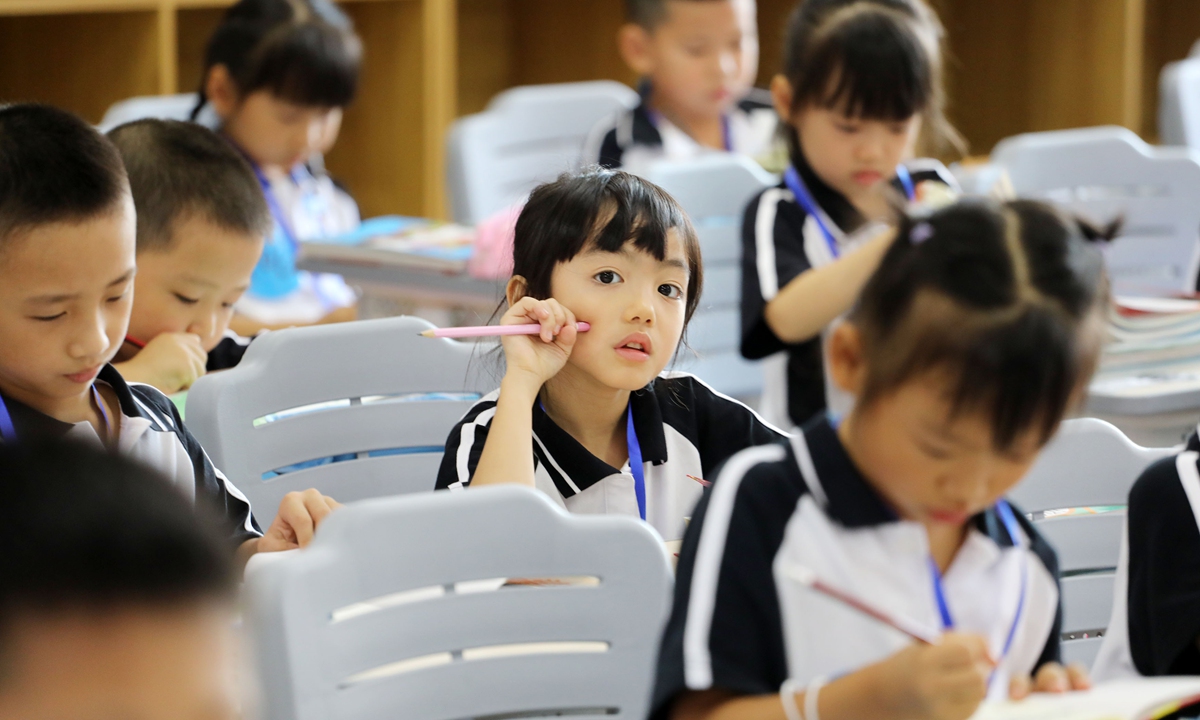Education in China
Education in China
Education in China is primarily managed by the state-run public education system, which falls under the Ministry of Education. All citizens must attend school for a minimum of nine years, known as nine-year compulsory education, which is funded by the government.
Compulsory education includes six years of elementary school, typically starting at the age of six and finishing at the age of twelve, followed by three years of middle school and three years of high school.
Laws in China regulating the system of education include the Regulation on Academic Degrees, the Compulsory Education Law, the Teachers Law, the Education Law, the Law on Vocational Education, and the Law on Higher Education.
In 2020, the Ministry of Education reported an increase of new entrants of 34.4 million students entering compulsory education, bringing the total number of students who attend compulsory education to 156 million.
In 2003, central and local governments in China supported 1,552 institutions of higher learning (colleges and universities), along with their 725,000 professors and 11 million students.
In 1985, the government abolished tax-funded higher education, requiring university applicants to compete for scholarships based on their academic capabilities. In the early 1980s, the government allowed the establishment of the first private institution of higher learning, thus increasing the number of undergraduates and people who hold doctoral degrees from 1995 to 2005.
Chinese investment in research and development has grown by 20 percent per year since 1999, exceeding $100 billion in 2011. As many as 1.5 million science and engineering students graduated from Chinese universities in 2006. By 2008, China had published 184,080 papers in recognized international journals – a seven-fold increase from 1996.
In 2017, China surpassed the U.S. with the highest number of scientific publications.
In 2021, there were 3,012 universities and colleges (see List of universities in China) in China,[11] and 147 National Key Universities, which are considered to be part of an elite group Double First Class universities, accounted for approximately 4.6% of all higher education institutions in China.
China has also been a top destination for international students and as of 2013, China was the most popular country in Asia for international students and ranked third overall among countries. China is now the leading destination globally for Anglophone African students and is host of the second largest international student’s population in the world.
There were 26 Chinese universities on lists of the global top 200 in the 2022 Academic Ranking of World Universities, behind only the United States in terms of the overall representation.
Shanghai, Beijing, Jiangsu and Zhejiang outperformed all other education systems in the Programme for International Student Assessment.
China's educational system has been noted for its emphasis on rote memorization and test preparation. However, PISA spokesman Andreas Schleicher says that China has moved away from learning by rote in recent years.
According to Schleicher, Russia performs well in rote-based assessments, but not in PISA, whereas China does well in both rote-based and broader assessments.
https://en.wikipedia.org/wiki/Education_in_China


